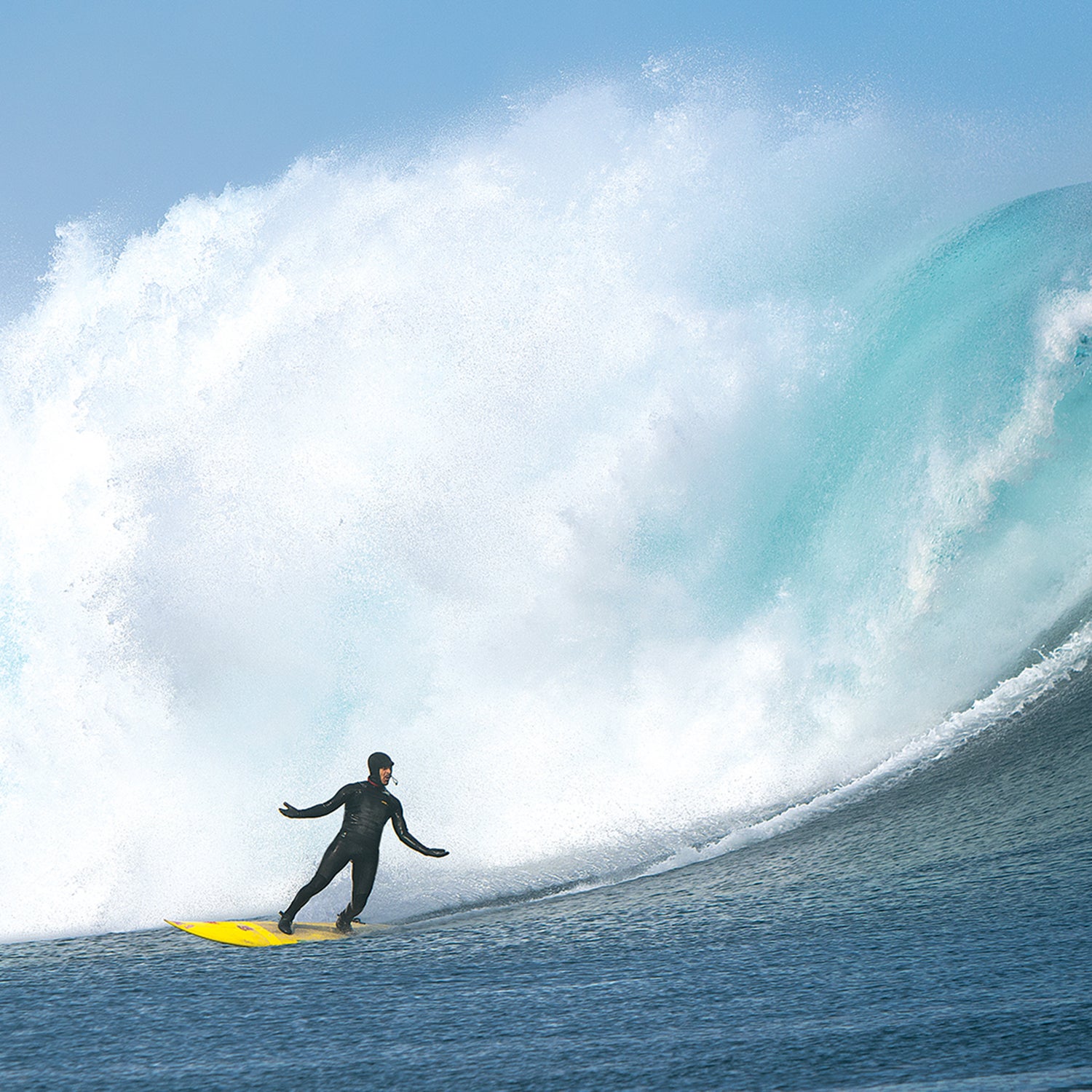It started with a foam chip the size of a Scrabble tile. In 2007, Patagonia, which had launched its wetsuits the year before, decided it no longer wanted to use petroleum-based neoprene—the industry standard. There were a few existing alternatives, such as limestone-derived geoprene, but none of these impressed the eco-conscious Ventura, California–based brand. So when , a natural-rubber company that had been making alternatives for people with latex allergies, got wind of Patagonia’s frustration, it baked up a plant-based square of rubber from Guatemalan hevea trees and sent it to Patagonia’s headquarters.
The wetsuit team liked the material, so it brought it to a traditional neoprene manufacturer to see if they could make suits out of the green rubber. Then they went back to Yulex to tweak the foam so it would work in a wetsuit.
Almost ten years later, the team succeeded. “It took 200 material trials to come up with a material that would meet or beat the current neoprene,” says John “Hub” Hubbard, who manages Patagonia’s wetsuit development. The new rubber needed to have the same stretch and strength as a petroleum-based product, hold up to sun and salt, and be ozone- and UV-resistant.
Patagonia finally released the this fall. Even more important, it also released the technology behind the rubber and the names of the factories that produced the suits. The company’s hope: to motivate other manufacturers to use fewer resource-intensive materials. “We knew from the beginning that we’re a very small player in the surf industry—there’s no way we’re going to disrupt that industry—but it was always our intention to invite other companies to use [the technology],” Hubbard says.
The basic idea is that by bringing sustainable materials to market in a broad way, everyone—the brands, the consumers, the planet—benefits. Sharing technology helps other companies avoid sinking years of time and money into product development. But it turns out (not surprisingly, really) that opening up your intellectual property, supply chain, and chemical usage is tricky, even in the close-knit, eco-minded outdoor industry. Competitive advantage comes from having tech other brands don’t, and some companies (Gore-Tex, for instance) live and die by their hold on their proprietary technology.
Open-sourcing gear technology doesn’t always work, and it’s not new. In the mid-1990s, Patagonia opened up its organic-cotton sourcing, but because it was more expensive and difficult than the traditional supply chain, it didn’t get much traction. In 2010, Nike set up what it called the GreenXChange, a Creative Commons–style marketplace for intellectual property, with other large companies like Best Buy and DuPont. It fizzled from lack of participation.
But recently, some brands, including Patagonia and Nike, along with trade groups like the (OIA), have stepped up their calls for increased sharing and transparency—especially in places where open sourcing can lower the environmental impact of producing a product. They’re trying to emulate a few companies in the tech world—most recently Tesla—where opening up intellectual property is viewed as a way to improve the quality of an entire industry. And there are signs that it’s working.
Much of the talk about collaboration and openness started with the (SAC), which came out of the OIA in 2009. It saw multiple brands trying to shorten the same supply chains, all of which seemed like a waste of effort and resources. Plus, it thought the best methods for developing low-toxicity waterproofing should win out, and then get adopted as standard. The SAC’s initial goal was to come up with a sustainability ranking so that brands could benchmark the impacts of their products and practices against each other. It has slowly encouraged more companies to share what they’re doing and how they’re doing it. Take Nike: The company opened up its materials sustainability index, which helps select fabrics based on their environmental footprints, on an app called Making. It’s not all altruistic: Nike hopes that greater demand will lead to greater and cheaper supply of these materials.
The SAC eventually developed the Higg Index—a tool for measuring impact and sharing practices that’s sort of like Tinder for manufacturing trade secrets. So far, dozens of big outdoor brands, including Arc'teryx, Columbia, Brooks, Adidas, Lululemon, and New Balance, have adopted the index. Companies fill out modules that detail things like how they manufacture and package their products. Two brands, or a brand and a factory, can opt to share information with each other, or their information can be anonymously shared across all participating brands. In 2017, the SAC is planning to release a set of industry-wide benchmarks, based on what brands are now willing to share, says Betsy Blaisdell, vice president of the SAC.
They’re trying to emulate the tech world—most recently Tesla—where opening up intellectual property is viewed as a way to improve the quality of an entire industry.
Most other brands that have open-sourced their technology or processes have done so only if they’re at the top of their competitive set and aren’t going to disadvantage themselves. In March, as a part of World Water Day, Levi’s released its Water To make sustainability work across the industry, Beth Jensen, director of sustainable business innovation at the OIA, says they’re trying to figure out how to promote sharing in ways that don’t undercut profitability or competitiveness and to come up with specific areas where the industry can improve. “We would like to explore less impactful solutions to DWR chemistry that have shorter carbon chains,” she says. “We’re also missing a lot of data on a lot of our issues, like sources of microplastics and microfibers in the waterways. We think that’s information that should be open.”


